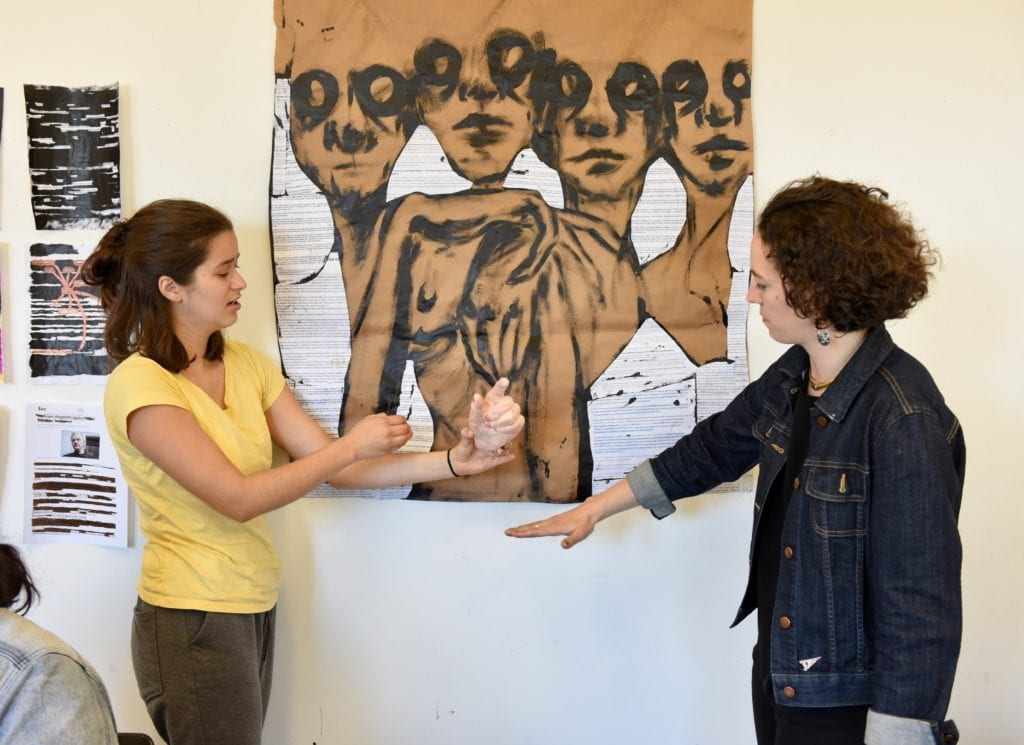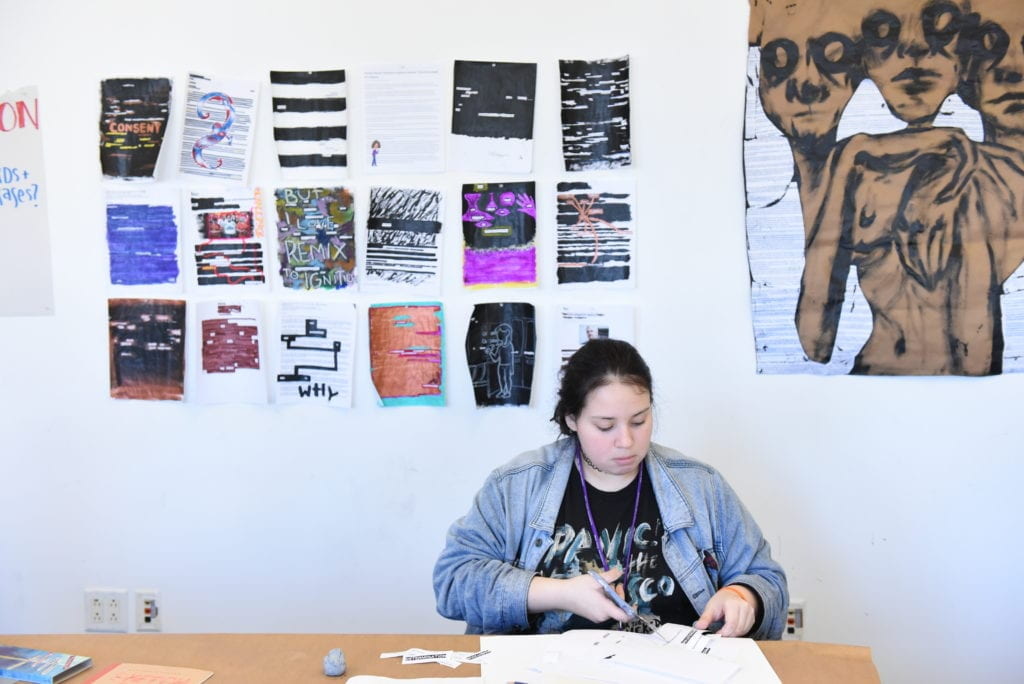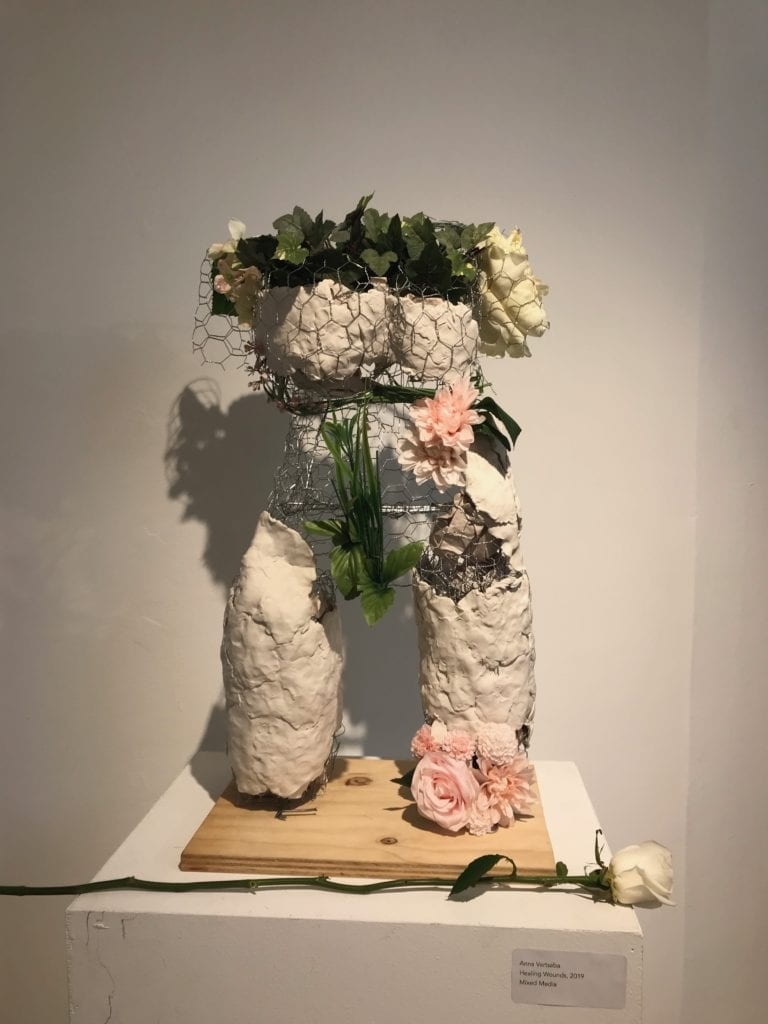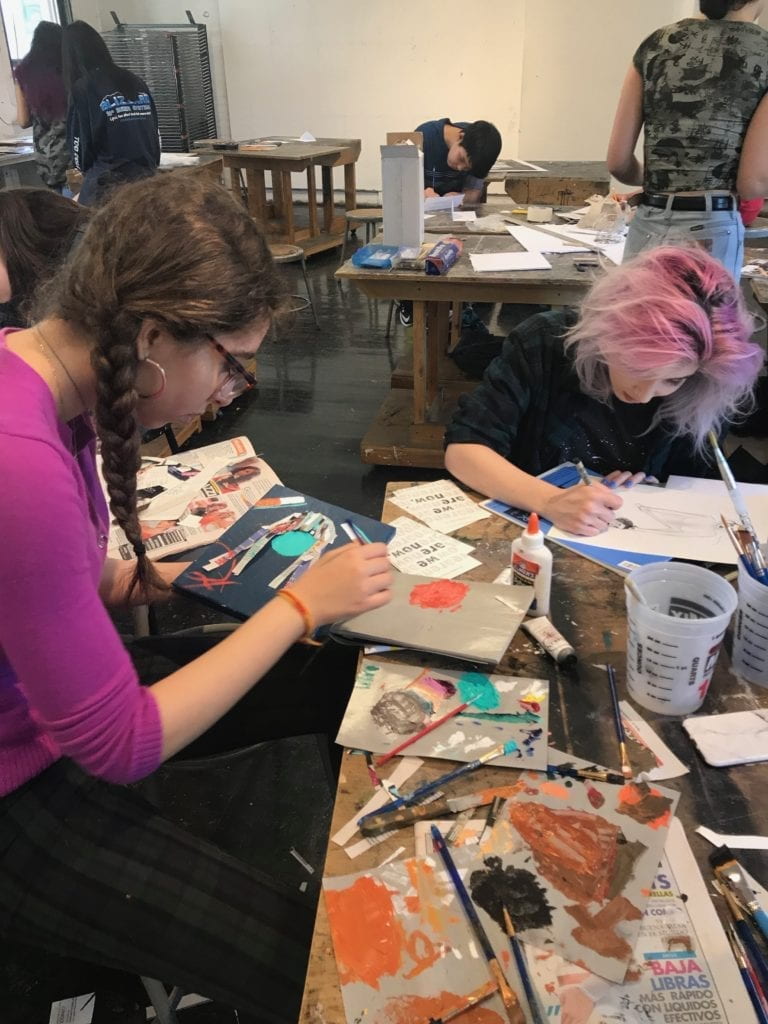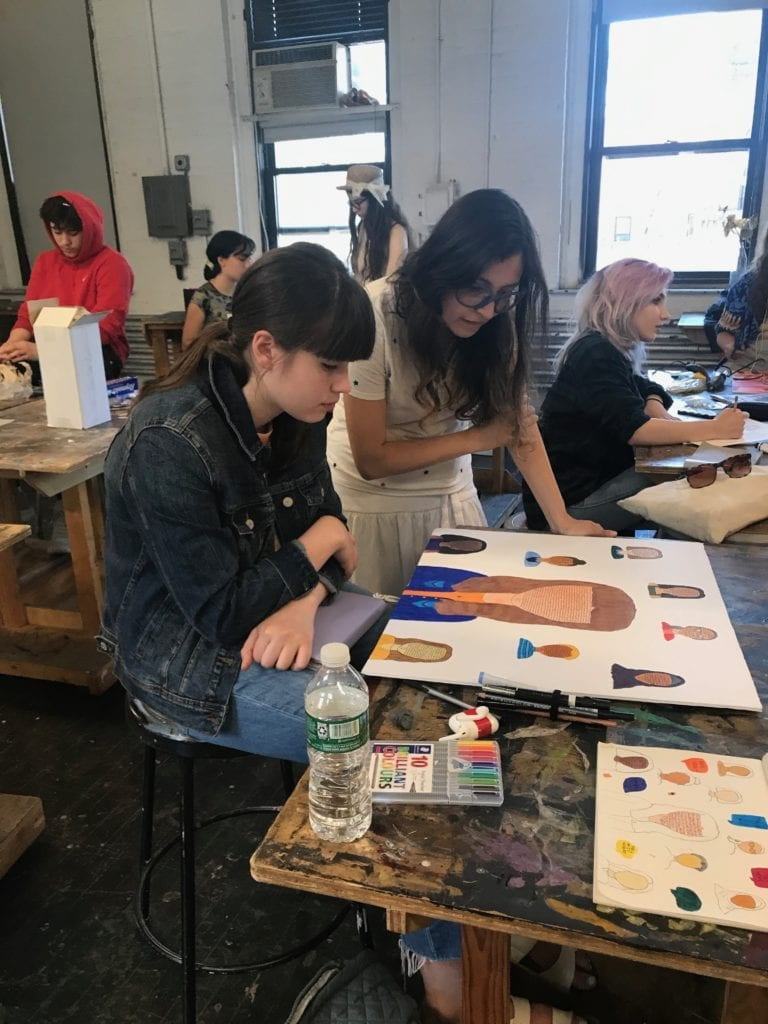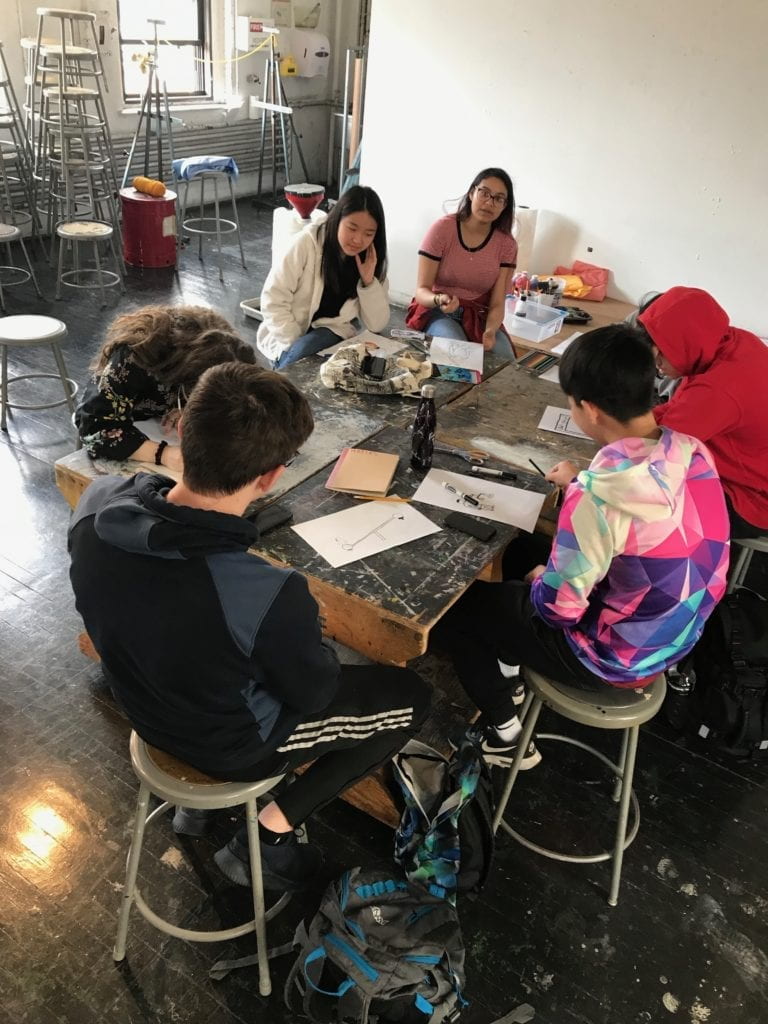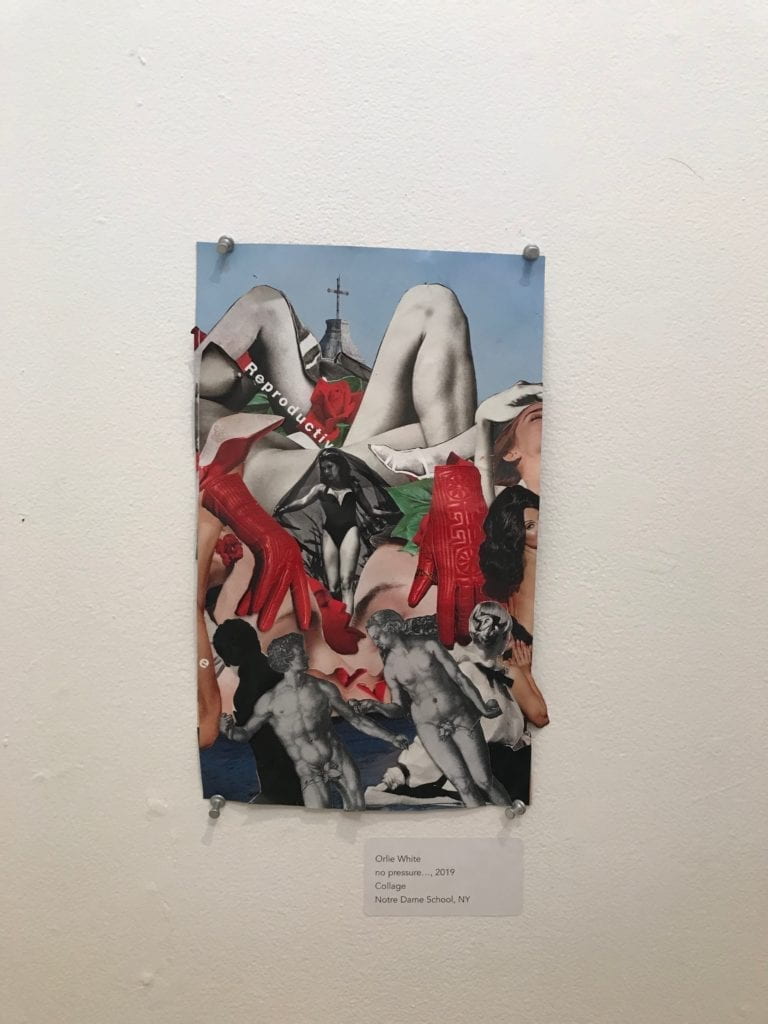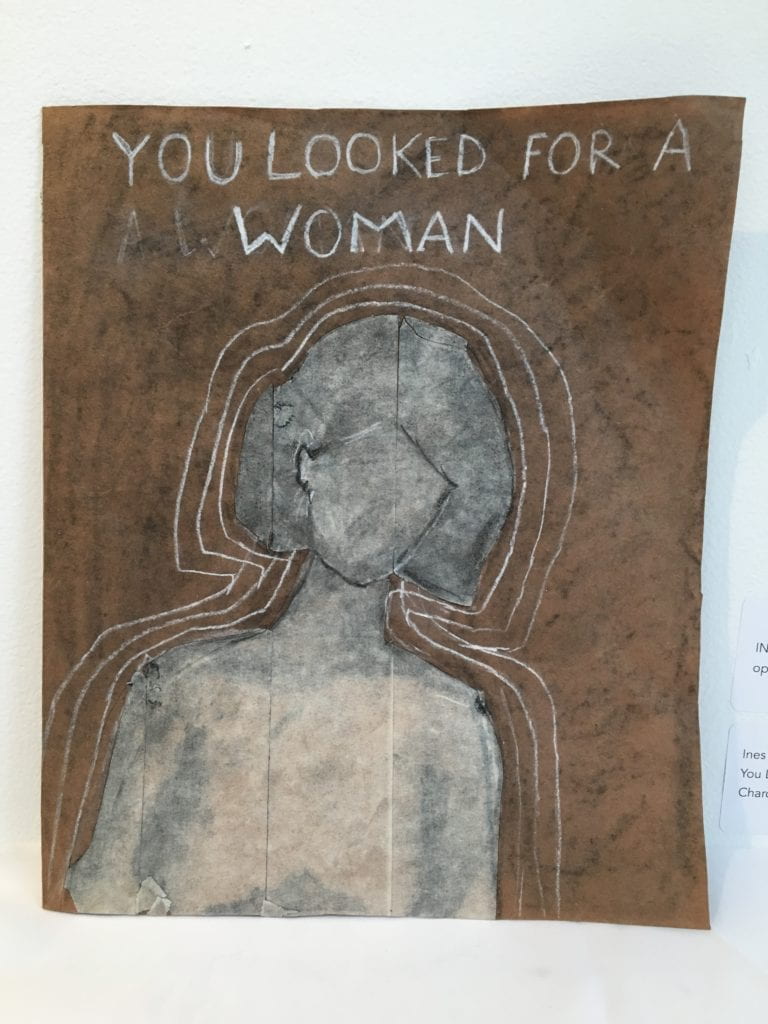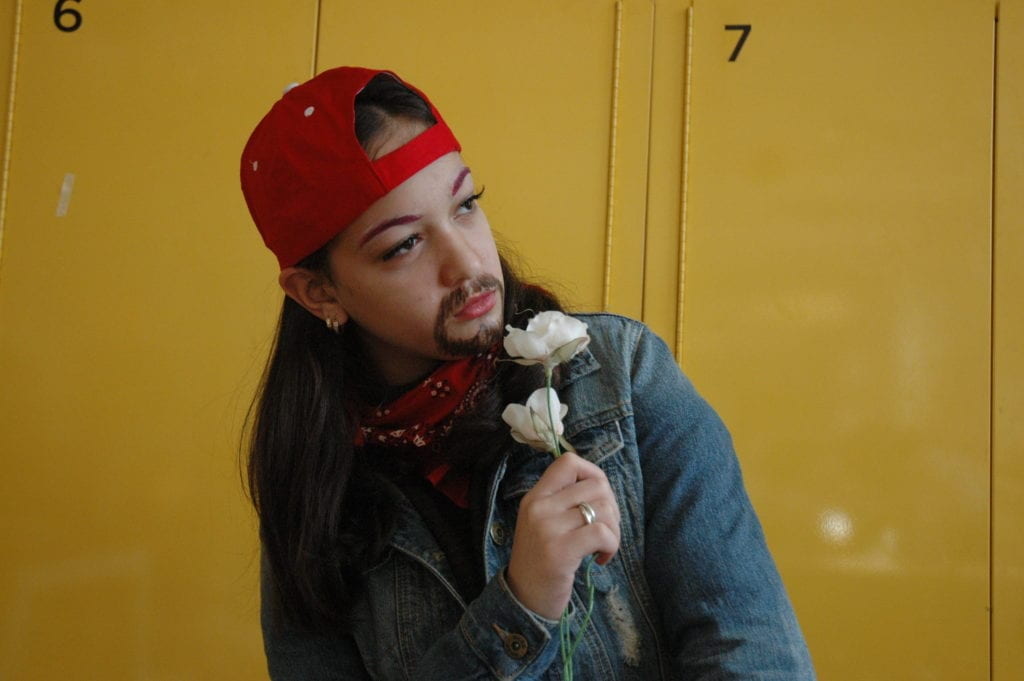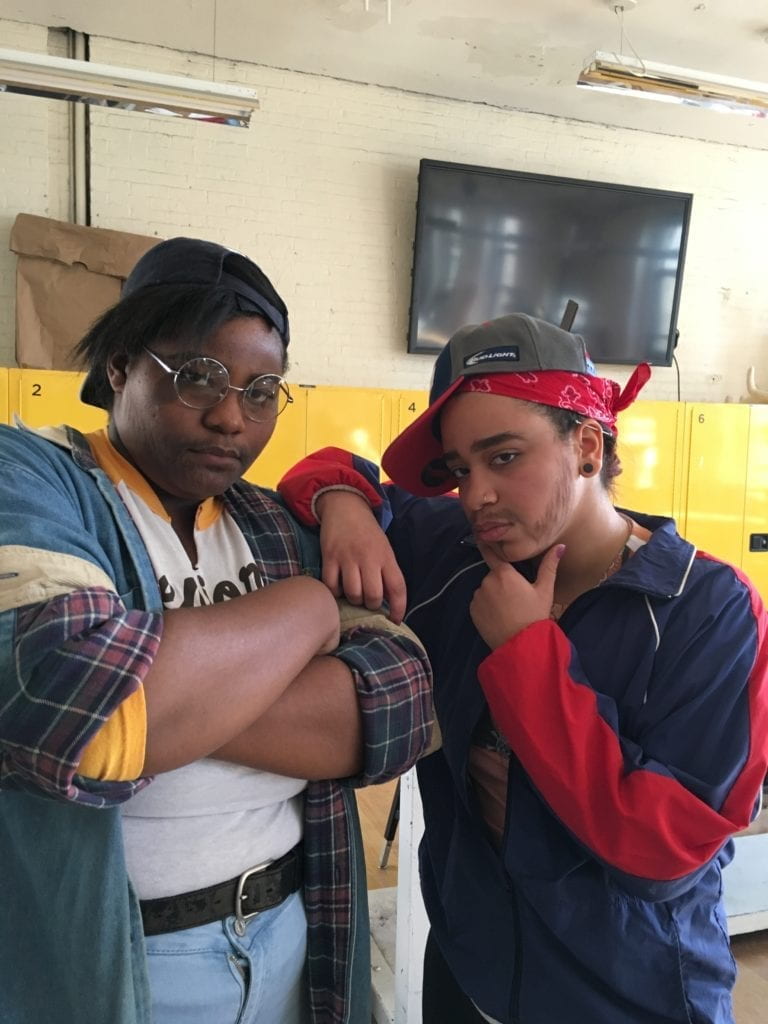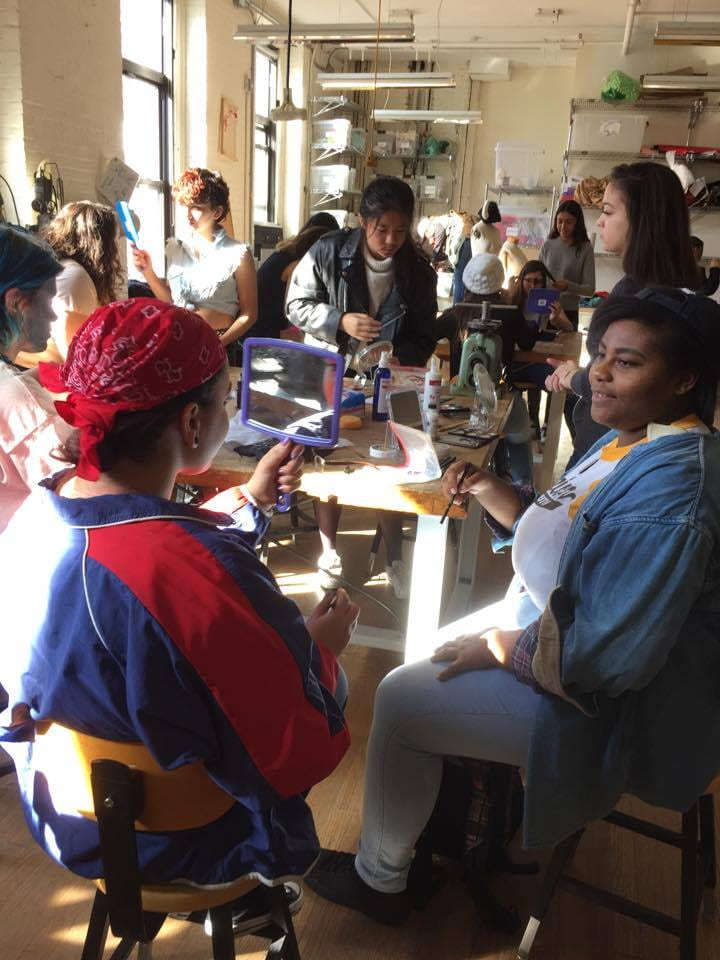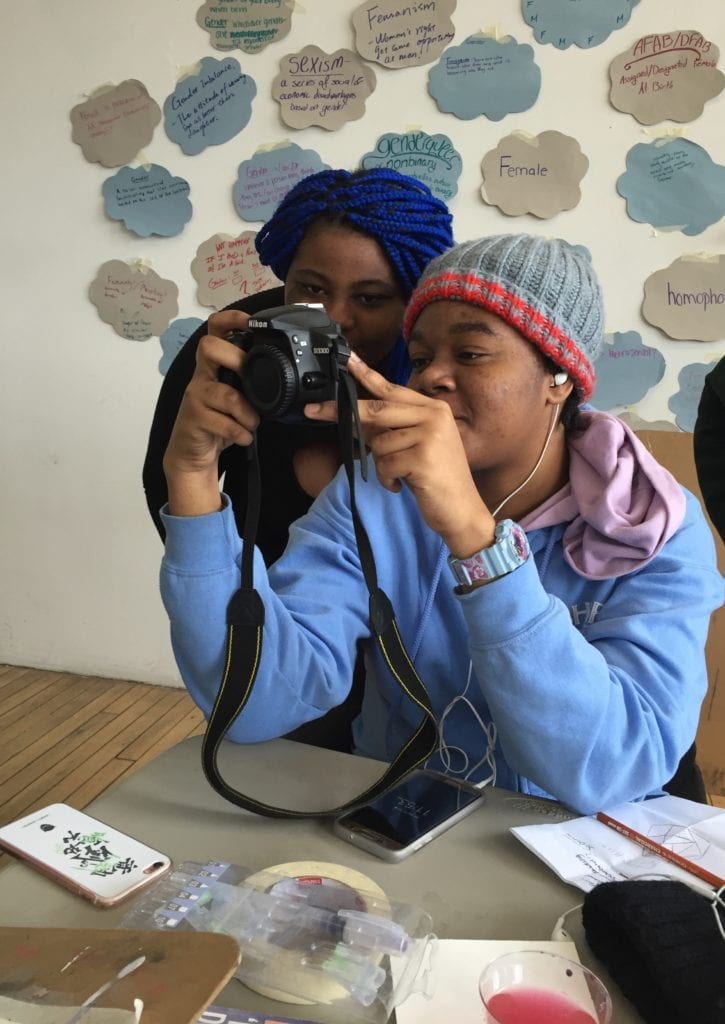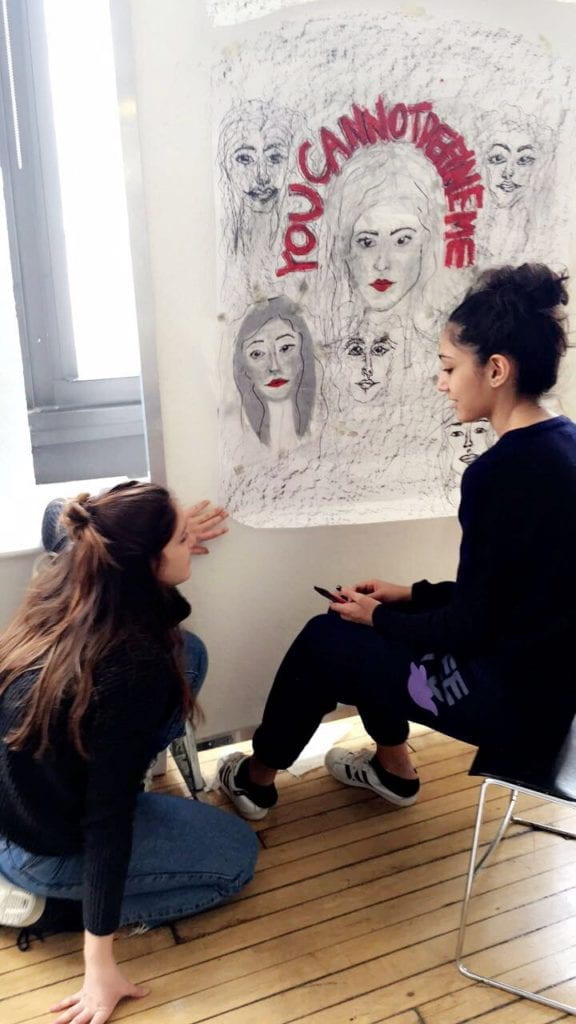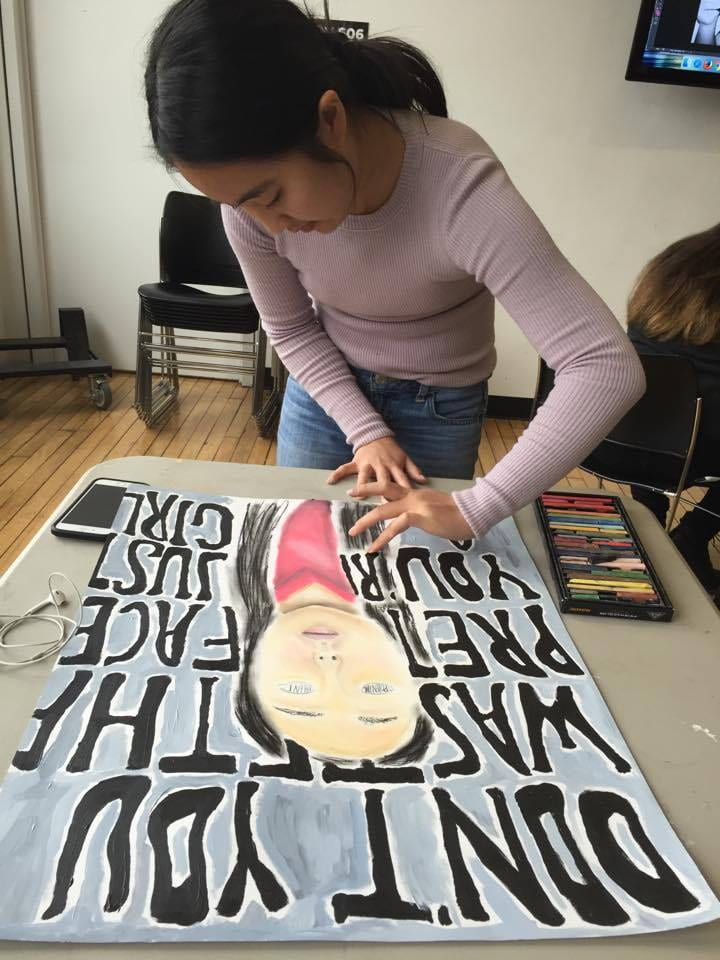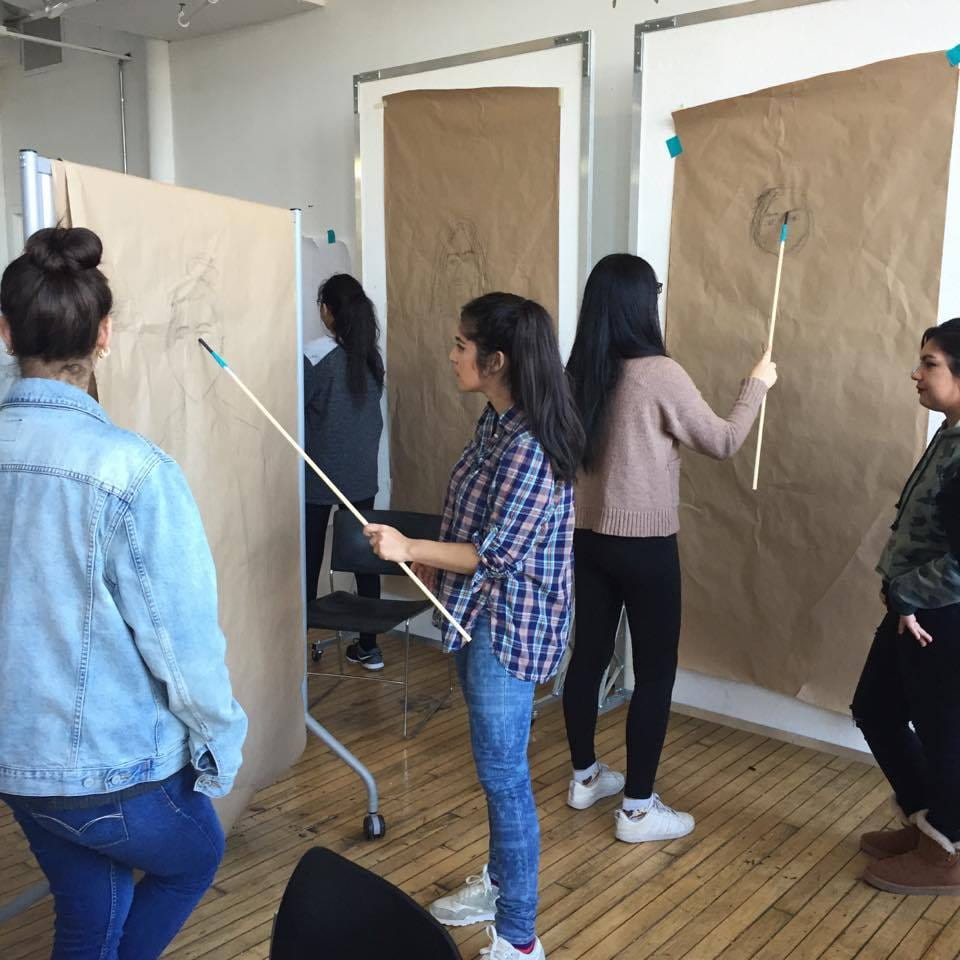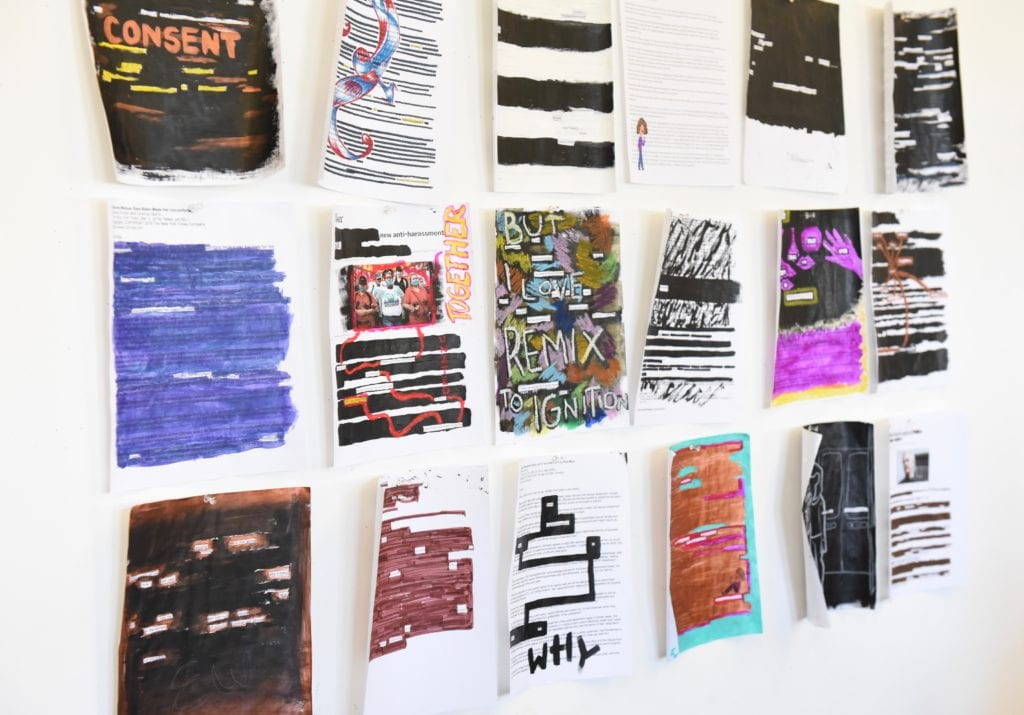
Throughout the world women and girls face countless acts of violence in their homes and at work. Gender-based violence is often dismissed as a family affair in relation to domestic violence, overlooked as simply a lie or misunderstanding in the workplace, excused as an example of cultural differences, or described as an inevitable aspect of war and conflict. The #metoo movement has galvanized women and men in the U.S. to speak out against sexual harassment and in many communities, educators, and students are developing curriculum to address gender violence in middle and high school classrooms. Artists have also contributed to this movement by commenting on unequal and often violent relations between men and women and creating work that seeks to open conversation about the socialized expectations for and power dynamics involved in gender identity. Some artists use their work to empower victims of gender violence to speak up and take action against their oppressors, while others direct their work towards those who have perpetrated violence against others.
In this class, students will use a range of visual media to explore historic precedents for gender roles and conflict, make connections to the contemporary #metoo movement, and envision new contributions to the unfolding story of gender inequality and violence.
Big question: How can art contribute to the #metoo movement?
Sub-Questions:
- Am I #metoo?
- How do power dynamics affect gender violence?
- What does metoo look like without the #?
- How can we create a community of consent?
